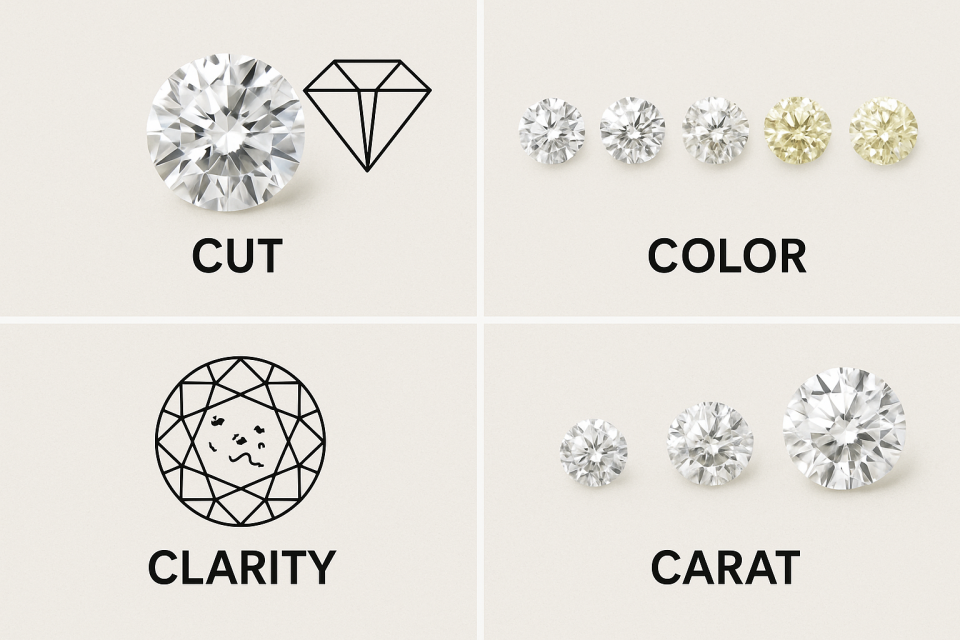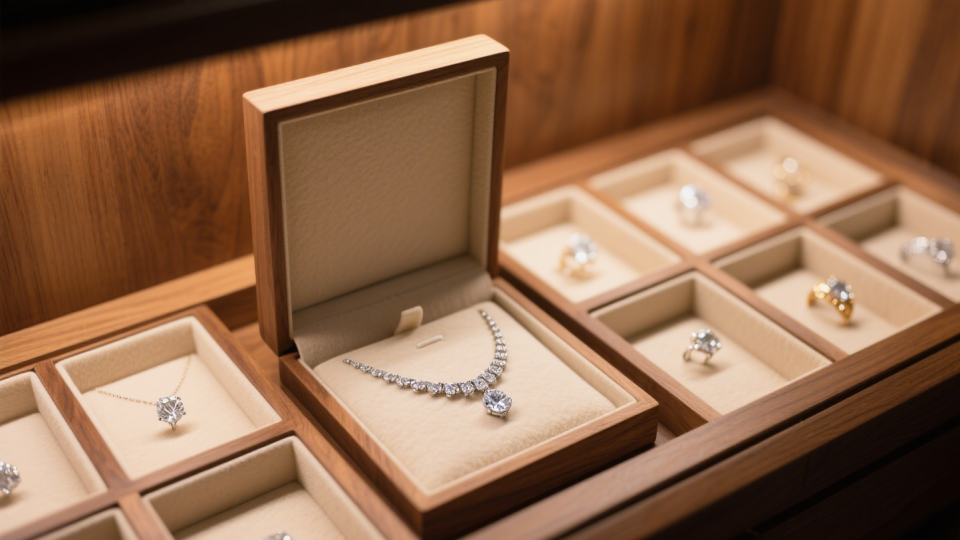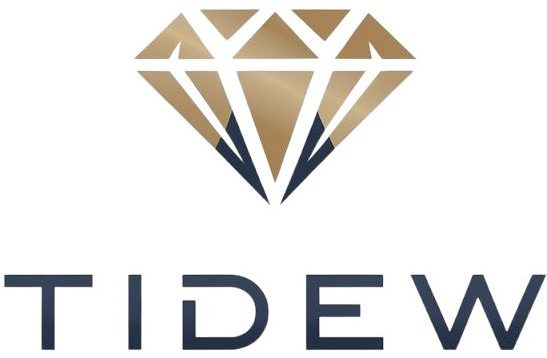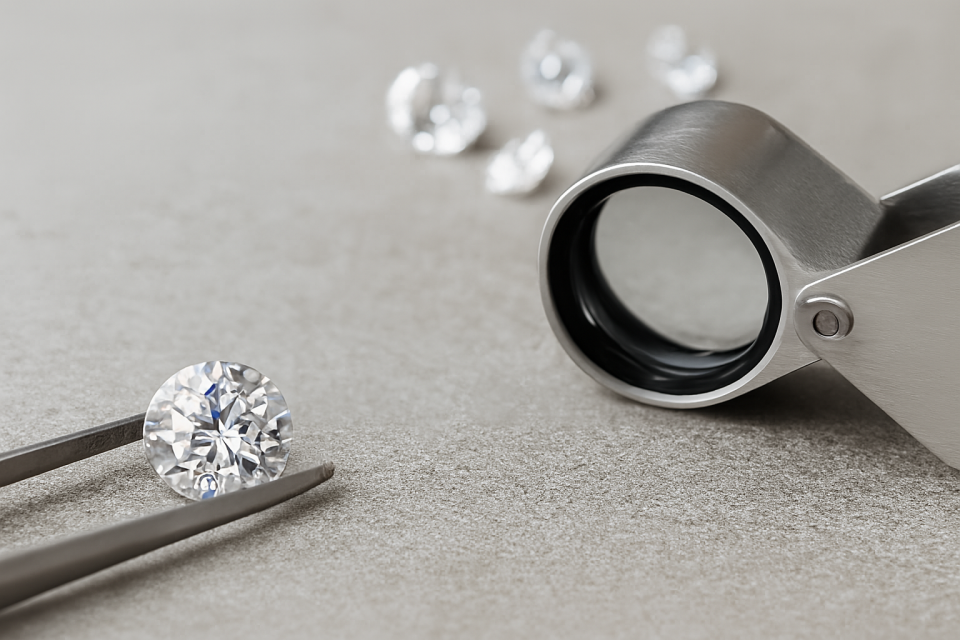Introduction
Lab-grown diamonds have rapidly become one of the hottest trends in the jewelry industry. They look identical to natural diamonds, have the same physical and chemical properties, and often cost significantly less. More importantly, they are a sustainable and ethical choice for consumers concerned about environmental and social issues.
But if you are shopping for a lab-grown diamond for the first time, it can feel overwhelming. There are so many options, sizes, and quality grades to choose from. This is where understanding the 4Cs—Cut, Color, Clarity, and Carat—becomes essential.
In this guide, we’ll break down the 4Cs in detail and give you practical tips to make a smart, confident purchase.
Why Choose Lab-Grown Diamonds?
Before diving into the 4Cs, let’s quickly explore why more people are choosing lab-grown diamonds:
- Eco-Friendly & Ethical – Unlike mined diamonds, lab-grown diamonds don’t involve large-scale mining operations that disrupt ecosystems or raise ethical concerns.
- Cost Advantage – Lab-grown diamonds can cost 30–40% less than natural diamonds of similar quality, allowing you to get a bigger or better diamond for your budget.
- Same Beauty & Quality – Lab-grown diamonds are real diamonds with the same optical brilliance, fire, and durability as mined diamonds.
For more details, check out our guide on What Are Lab-Grown Diamonds?.
Understanding the 4Cs
The 4Cs—Cut, Color, Clarity, and Carat—are universal standards used to evaluate diamond quality. Whether you choose a mined or lab-grown diamond, these factors are crucial to understanding its value and appearance.
1. Cut: The Key to Brilliance
The cut of a diamond refers to how well it has been shaped and faceted from its rough state. A well-cut diamond will reflect light beautifully, producing the sparkle diamonds are famous for.
- Grades of Cut: Diamonds are graded as Excellent, Very Good, Good, Fair, or Poor.
- Why It Matters: A diamond with an Excellent cut will appear more brilliant and fiery than a poorly cut stone, even if it has a lower color or clarity grade.
- Our Recommendation: Always prioritize cut quality over other factors, as it has the greatest impact on beauty.
Tip: If you’re on a budget, choose an Excellent or Very Good cut even if it means compromising slightly on color or clarity.
2. Color: The Shade of Perfection
Diamond color refers to the absence of color in a stone. The grading scale runs from D (colorless) to Z (light yellow or brown).
- Colorless Diamonds (D-F): Appear icy white and are the rarest and most valuable.
- Near Colorless (G-J): Offer a balance of beauty and value, appearing white to the naked eye in most settings.
- Slight Tint (K-M): May have a faint yellow hue but can still look stunning when set in yellow or rose gold.
Tip: For lab-grown diamonds, G-H color grades often provide the best value—they appear nearly colorless but cost less than D-F stones.
3. Clarity: The Art of Flawlessness
Clarity measures the presence of inclusions (internal flaws) and blemishes (surface flaws) in a diamond. Most imperfections are microscopic and do not affect beauty.
- Clarity Grades:
- FL (Flawless) / IF (Internally Flawless)
- VVS1 & VVS2 (Very, Very Slightly Included)
- VS1 & VS2 (Very Slightly Included)
- SI1 & SI2 (Slightly Included)
- I1-I3 (Included)
Tip: For most buyers, VS2 or SI1 clarity offers great value because inclusions are not visible to the naked eye.
4. Carat: The Weight of Beauty
Carat weight refers to how much a diamond weighs, not necessarily its size (though weight and size are related).
- Price & Carat: Prices increase exponentially with carat weight.
- Visual Impact: A 1-carat diamond with an Excellent cut can look bigger and brighter than a poorly cut 1.2-carat diamond.
- Tip: Consider opting for slightly “underweight” diamonds (e.g., 0.90 ct instead of 1.00 ct) to save money without sacrificing visual size.

Balancing the 4Cs
When choosing a diamond, it’s important to balance the 4Cs based on your priorities and budget:
- Maximizing Sparkle: Prioritize Cut first, then Color.
- Budget-Friendly Options: Choose a near-colorless (G-H) diamond with VS2 clarity.
- Size Matters: If carat weight is a priority, consider a slightly lower color or clarity grade.
Example Budget Allocations:
- Luxury Budget: D Color, VVS1 Clarity, Excellent Cut, 1.5 Carat.
- Balanced Budget: G Color, VS2 Clarity, Excellent Cut, 1.0 Carat.
- Value Budget: H Color, SI1 Clarity, Very Good Cut, 0.90 Carat.
For more details, explore our Affordable Lab-Grown Diamonds guide.
Certification and Quality Assurance
When buying a lab-grown diamond, certification is key. A diamond certificate verifies its characteristics and ensures you get exactly what you pay for.
- Popular Certification Bodies:
- GIA (Gemological Institute of America)
- IGI (International Gemological Institute)
Tip: Always request a certification from a reputable lab to guarantee the authenticity and quality of your diamond.
Where to Buy Lab-Grown Diamonds
Lab-grown diamonds are available both online and in physical jewelry stores.
Online Stores
- Offer greater selection and better pricing.
- Provide high-resolution images and 360° views.
- Allow you to customize your ring design easily.
Physical Stores
- Ideal for customers who prefer seeing diamonds in person.
- Provide immediate access to jewelry consultants.
Tip: Always check reviews and certifications when purchasing online.
Explore our Shop Our Lab-Grown Diamonds collection for high-quality, certified stones at competitive prices.
Caring for Your Lab-Grown Diamond
Once you have your perfect diamond, taking care of it will ensure it remains as brilliant as the day you bought it:
- Clean your diamond regularly with mild soap and water.
- Store it separately to avoid scratches.
- Get it checked annually by a jeweler to maintain its setting.

Conclusion
Choosing a lab-grown diamond doesn’t have to be complicated. By understanding the 4Cs—Cut, Color, Clarity, and Carat—you can confidently choose a diamond that perfectly matches your style and budget.
Whether you’re buying an engagement ring, a pendant, or just exploring sustainable jewelry options, lab-grown diamonds offer exceptional beauty, value, and peace of mind.
Ready to find your perfect stone?
Visit our Engagement Rings Collection and explore lab-grown diamonds that combine brilliance, sustainability, and affordability.

